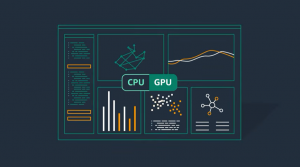Violin Memory says throw out those disks with its new all-flash arrays
![]() Violin Memory, Inc. is rolling out two new all-flash arrays, pitching them as the first flash storage systems that can run primary workloads at less than the cost of traditional disk. The company is also releasing an overhauled version of its Concerto storage operating system and Symphony simple management control suite, along with a pricing plan that lets customers grow storage capacity using software keys instead of hardware upgrades.
Violin Memory, Inc. is rolling out two new all-flash arrays, pitching them as the first flash storage systems that can run primary workloads at less than the cost of traditional disk. The company is also releasing an overhauled version of its Concerto storage operating system and Symphony simple management control suite, along with a pricing plan that lets customers grow storage capacity using software keys instead of hardware upgrades.
The new 7300 and 7700 Flash Storage Platforms feature a common code base and capacities ranging from 70TB raw (217 TB effective) in a three-rack 7300 FSP unit to 422 TB raw (1.3 petabytes effective) in a six-shelf 7700 FSP configuration. Violin claims a deduplication ratio of 6:1 and performance levels of 1 million inputs/outputs per second (IOPS) at sub-millisecond latencies. A high-end 7700 FSP (above right) can reportedly support up to 20,000 virtual desktops simultaneously.
“This is a big deal for us,” said Erik Ottem, director of product marketing. “We’ve been working on it for a couple of years.”
Costs fall 75 percent
Admitting that Violin had fallen behind competitors in price/performance over the last year, Ottem asserted that the overhauled product line vaults the company into the lead again, with an effective reduction in cost-per-gigabyte of more than 75 percent over the company’s previous generation of arrays and costs of as little as $1.50 per gigabyte in large installations.
The keys to bringing flash storage in line with disk alternatives are de-duplication are compression, which the new Concerto OS 7 enables users to specify at the logical unit number (LUN) level. Administrators can also turn the space-saving features on and off on a per-application basis, a feature that Violin claims is an industry first.
Concerto OS7, which Violin positions as “the world’s first all-flash storage operating system developed for primary storage,” also includes a broad new set of data management, protection, and recovery services. Three separate user interfaces in previous versions have been consolidated into one.
Data protection features got a lot of attention in the new release. “Application-consistent snapshots” improve upon crash-based snapshots by capturing the state of applications at the time of a failure. Data protection has been enhanced with the addition of a “time machine,” which enables users to restore data to an earlier state in the event of an incident like a virus attack.
Continuing on the data protection theme, Clusters can now also be physically separated for enhanced data protection, with synchronous replication available within a data center and asynchronous replication available across distances.
For customers that are still tiptoeing into flash, Violin introduced an entry-level 7300E model that can be configured with as little as 11 TB of raw storage, upgradable to 35 TB raw (221 TB effective) in stepped increments using software keys.
Violin said it’s already shipping the 7300 arrays with a list price of $265,000 for a 17.5 TB configuraton. Users of the company’s previous 7100 and 7200 arrays can upgrade with the addition of Fibre Channel cards and a Concerto OS7 refresh. Violin will continue to sell both the 6000-series and 7100 and 7200 predecessors.
A message from John Furrier, co-founder of SiliconANGLE:
Your vote of support is important to us and it helps us keep the content FREE.
One click below supports our mission to provide free, deep, and relevant content.
Join our community on YouTube
Join the community that includes more than 15,000 #CubeAlumni experts, including Amazon.com CEO Andy Jassy, Dell Technologies founder and CEO Michael Dell, Intel CEO Pat Gelsinger, and many more luminaries and experts.
THANK YOU





















